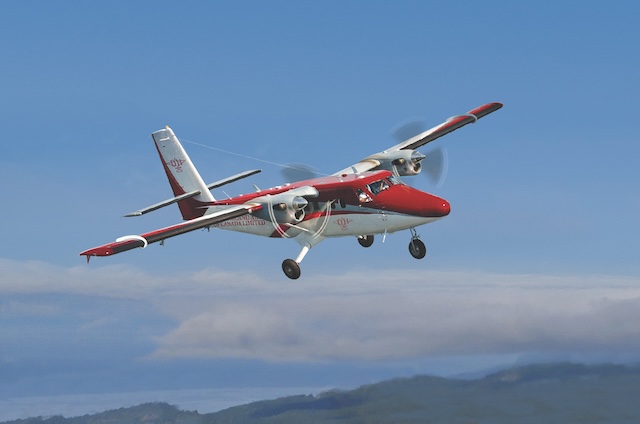DHC-6 Twin Otter
Summary
| Category | Military Transport Aircraft |
| Origin country | 🇨🇦 Canada |
| Manufacturer | De Havilland Canada |
| First flight | 20 May 1965 |
| Year introduced | 1966 |
| Number produced | 985 units |
| Average unit price | $7 million |
Description
Development of the aircraft began in 1964 as a twin-engine replacement for the single-engine DHC-3 Otter, designed to retain the DHC-3's STOL capabilities. A key design feature included double-slotted trailing-edge flaps and ailerons that worked in unison with the flaps to enhance STOL performance. The availability of the 550 shaft horsepower (410 kW) Pratt & Whitney Canada PT6A-20 turboprop in the early 1960s made the concept of a twin feasible. The first flight took place on 20 May 1965. From 1965 to 1988, De Havilland Canada built the aircraft, ceasing production after 844 had been produced. Viking Air purchased the type certificate and restarted production in 2008, before re-adopting the DHC name in 2022. In 2023, DHC restarted production of the Series 300, in addition to the Series 400 produced by Viking.
The initial Series 100 aircraft were powered by two 550 shp PT6A-20 engines. The Series 200 incorporated enhancements based on initial operational experience, including improvements to STOL performance, a longer nose with a larger baggage compartment, and a larger door to the rear baggage compartment. The Series 300 introduced more powerful Pratt & Whitney Canada PT6A-27 engines, flat rated to 620 hp, which improved aircraft performance and payload. The Series 400 incorporated Honeywell Primus Apex fully integrated avionics, modernized electrical and lighting systems, composite materials for non-load-bearing structures, and Pratt & Whitney Canada PT6A-34 engines.
Operational capabilities include factory delivery with floats, skis, or tricycle landing gear. The aircraft is used in remote and northern regions, including Canada and Alaska, and areas with challenging flying environments such as Papua New Guinea. It facilitated a network of short-field airports in Norway and was used by commuter airlines in the United States for scheduled passenger operations, including those utilizing dedicated STOLports, and also provided connecting feeder service for larger carriers. Furthermore, the Twin Otter is utilized in Antarctic transportation by programs such as the British Antarctic Survey and the United States Antarctic Program for research and supply flights.
Main Variants:
-
DHC-6 Series 100: Initial production version powered by two 550 shp Pratt & Whitney PT6A-20 engines.
-
DHC-6 Series 200: Improved version of the Series 100 with enhancements including a longer nose and larger baggage door.
-
DHC-6 Series 300: Featured Pratt & Whitney Canada PT6A-27 engines, flat rated to 620 hp, improving performance and payload.
-
Viking Air DHC-6 Series 400: New production version first delivered in 2010, with Pratt & Whitney Canada PT6A-34 engines and modernized avionics.
-
DHC-6 Classic 300-G: Updated DHC-6 Series 400 featuring a glass cockpit.
Technical specifications
| Version: DHC-6-300 | |
|---|---|
| Maximum speed | 315 km/h (196 mph) |
| Wing area | 39 m² (419.8 sqft) |
| Wingspan | 20 m (65.6 ft) |
| Height | 6.0 m (19.6 ft) |
| Length | 15.8 m (51.9 ft) |
| Service ceiling | 7,620 m (25,000 ft) |
| Empty weight | 3,175 kg (7,000 lbs) |
| Max. takeoff weight | 5,670 kg (12,500 lbs) |
| Climb rate | 8.1 m/s (26.6 ft/s) |
| Powerplant | 2 x turboprops Pratt & Whitney Canada PT6A-27 delivering 410 kW each |
Current operating countries
| Country | Units | ||
|---|---|---|---|

|
Peru | 15 | |

|
Chile | 13 | |

|
United Arab Emirates | 11 | |

|
France | 5 | |

|
Canada | 4 | |

|
Ethiopia | 4 | |

|
Ecuador | 3 | |

|
Vietnam | 3 | |

|
Argentina | 2 | |

|
Iraq | 2 | |

|
Panama | 2 | |

|
Switzerland | 1 | |

|
Guatemala | 1 | |

|
Ireland | 1 | |

|
Seychelles | 1 | |

|
United States | 1 | |
All operators
